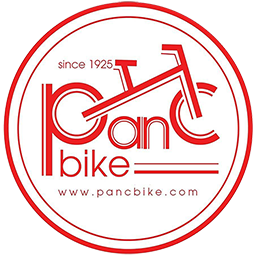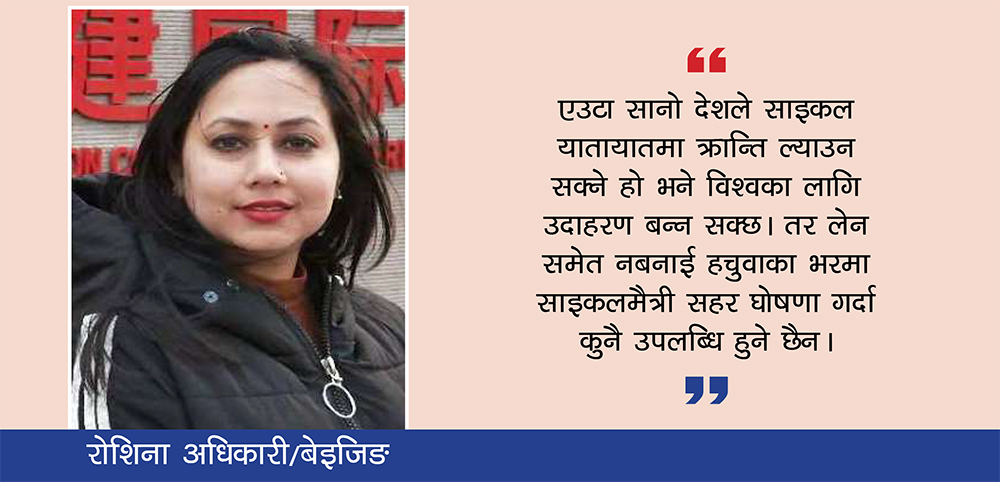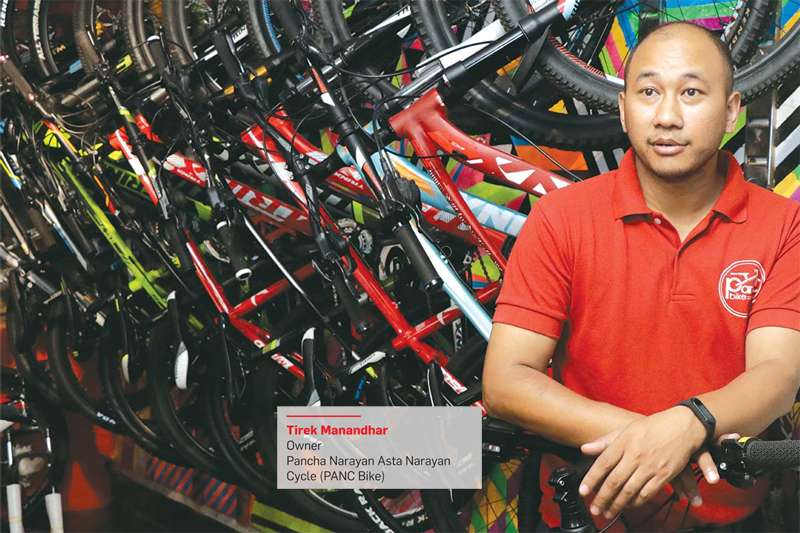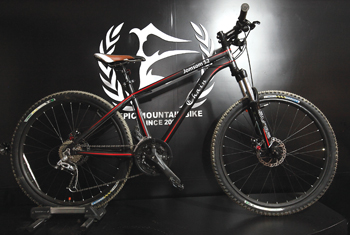Cart Detail
- BIKES
- COMPONENTS
- RECONDITION
- HIRE
- SERVICING
- STORE
- RIDES
- BLOG
- CONTACT
- 0
FILTER SEARCH
SEARCH RESULT
- ×
- ×pollutionkathmandu
Bookmark DETAIL


ID: 2201B139
Created At: 30-Jan-2022 02:11 AM
Nepal AI: On its Way to Reducing Air Pollution | Blinc Ventures
Akash Adhikari, the founder of the company Nepal AI, wants to use his expertise in technology development to tackle Nepal's infrastructure and mobility
Google+
Akash Adhikari, the founder of the company Nepal AI, wants to use his expertise in technology development to tackle Nepal’s infrastructure and mobility issues, the first one being air pollution that arises from heavy traffic. His first project will be the implementation of a bicycle sharing application that will eventually involve electric vehicles as well. The project is not without its challenges, especially in Nepal where nothing similar exists yet, but he is dedicated to his work and continues to move forward. Instead of trying to work on the idea exclusively by himself, he coordinates with other companies to make a collaborative effort. Based on his research he is optimistic about the final outcome but also emphasizes the need for everyone to take action towards issues like these before it is too late. Let us hear more about the idea from him.
1. Can you tell us about your idea? My idea is somewhat similar but different from conventional bike-sharing platforms like Tootle. It’s a ride-sharing platform exclusively for commuters and travelers who use bicycles. There are two kinds of bicycle-sharing systems: dock-stationed ones and dock-less ones. We wanted to implement a dockless bike-sharing system where commuters commute from one place to another using bicycles while making digital payments. After completing the ride and parking it at the nearest parking spot, it is available for another commuter for taking a new ride. It’s basically a sharing system but not like conventional ride-sharing platforms where you have a bike and share the space with other commuters. Here you just have the bicycle itself.
This idea is already quite well established, it has been applied in countries like China, the UK, and the US. But it is quite challenging to put it into practice here because of the mobility pattern of Kathmandu. However, there are some changes happening within this sector, for example, the Nepal Cycle Society has collaborated with the Lalitpur Metropolitan City to initiate cycle lanes. Likewise, Kathmandu Metropolitan City is also doing research on having cycle lanes in the Baneshwor area. It is good that such platforms are being created. With this platform, if we are able to work on our idea then I believe we can make mobility easier. 2. What is the legal status of the company? And how long has it been? The company is registered. It is registered as Nepal AI Pvt. Ltd. The company was established last December, a month before we participated in the Smart Urban Technology Challenge.3. How was your experience at SUTC?It was good. A series of technical/non-technical workshops were conducted and while some of them seemed basic to me, some others were extremely insightful.4. Which phase is the company in as of now?We are in the development phase. We have developed a hardware prototype for the QR locks in the bicycles. A retailer from Bangkok helped me with this, I visited him last month and luckily found the device. As of now, we are involved in budget testing. Rather than working independently we are trying to work together with Tootle and other companies. There are four people working in Nepal AI and the application is ready but the hardware is yet to be finalized.
5. What is your business model like?It is a high-volume low-margin based model where the direct revenues come from rides fare. We will also charge a deposit from the commuter before activating the bike for the ride. However, if this approach is not suitable in the case of Nepal, we will be coming up with other measures that we have not finalized yet. Apart from that, we can link this platform with logistics, food delivery channels which will eventually help people to earn extra income from their rides as well.6. Have you done any kind of initial testing?We have linked the app and hardware and have done the GPS testing. This gives the real-time data of where the bike is at the very moment. The testing hasn’t been done with the real bikes, just the app, and the hardware as of now and we found it to be working quite fine. 7. What kind of security measures do you have in place to avoid theft of these bicycles?This is definitely a huge problem in places where this type of bike-sharing system is in operation. First and foremost, I think the hardware needs to have the self-protecting/anti-theft measures like sensing unusual movements so that it can send the necessary information like details of the location to the concerned party. Secondly, if the device in the bicycle is tampered with in any way, we can always track the device. These are the initial measures that we are trying to apply. 8. How are you planning to generate the funds to operate the company? I am talking to some notable investors and CEOs of similar mobility platforms and have received a positive response from them. Once we have the funding, we are planning to start our operation in the Thamel area and hopefully the Pokhara Lakeside area in the first phase. For the first phase the revenue will be generated from the charges of using the bicycle but in the long term, we will be looking for other alternatives.9. When will you be able to get the return on investment?Breakeven depends on many factors. We are planning to have 25 bikes in the very beginning. With an average of 10 to 20 rides per day, in a span of 3 to 4 months, we will be able to settle the investment for 25 bikes. But, it’s not that simple and there are several dynamic factors that affect this.10. Are you involved in any other projects?Yes, definitely. We cannot completely settle on this model. My aim is not to stick only with the normal bicycle. If we move to other modes of transportation like electric vehicles, then I believe it will be more sustainable as well as scalable. This will help to prevent and reduce the massive air pollution issue that we are currently facing. We are discussing these ideas with our internal team. 11. What is the future plan for your company?We will move step-by-step towards building better products and technologies to solve mobility problems. This includes adapting shared and sustainable mobility, as well as research-based on data science and AI.12. Do you think the government will be able to support your project?We do have support from the government but in the meantime, there is a problem with certain policies, so it is quite difficult for a new innovative idea to take a business form in Nepal and the major reason for this is that the government does not predefine the policies, rules, and regulations. This has been a major problem for startups. Let’s hope that the government becomes more active in this issue and brings the necessary changes soon.13. Have you been in talks with other companies for collaboration?I am informally to talk with some companies. Being a mobility company we are trying to partner with Tootle and we haven’t decided about other companies yet. But we would love to collaborate and partner with other companies in the coming future. 14. How has your experience with entrepreneurship been so far?There have been a lot of struggles and challenges, or let’s say there are still a lot of challenges. There are challenges in every phase and stage. But I have a lot of inspiring people around me which has made me capable and willing to face those challenges. It has been difficult but the key is to not stop, have the passion, dedication, patience, and perseverance.
15. Anything else you’d like to say?Looking into the current scenario of Kathmandu city we should think about what we are handing over to the young generation. If you truly want to handover a clean, green and healthy city then think about your current actions and changes you need to make. Think about what we need to do now to have the future we have dreamt of.
A frog immediately leaps out if it is placed in hot water but when the same frog is kept in cool water where the temperature increases gradually, the frog won’t realize when to jump out, thus it dies there. The problems of air pollution and climate change are like the gradually heating water, and we are the frogs. We need to jump out of the slowly heating water before it’s too late.
For more information about Nepal AI, please contact Akash Adhikari at akashadhikari.py@nullgmail.com.
Interviewed and article by Jyotika Shah.
TAGSairpollutionartificialintelligenceblincventureskathmanduNepalnepalaiSocialbusinesssocialimpactsolutionSustainabletechnologytechsavvytechsolutions
See More Product Images:
Related Bookmarks
202007B1614
THE BICYCLE DIARIES...
202009B2
EDITORIAL: Bicycle dream
Given the short distances betw...
202009B4
I want to ride my bicycle...
Jomsom S2
© 2025 PANCBIKE. All rights reserved.
Hand-crafted & Made with : KTM Labs




